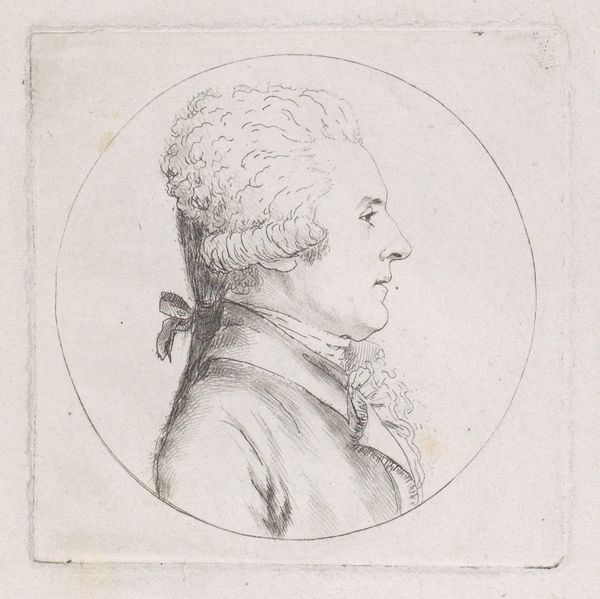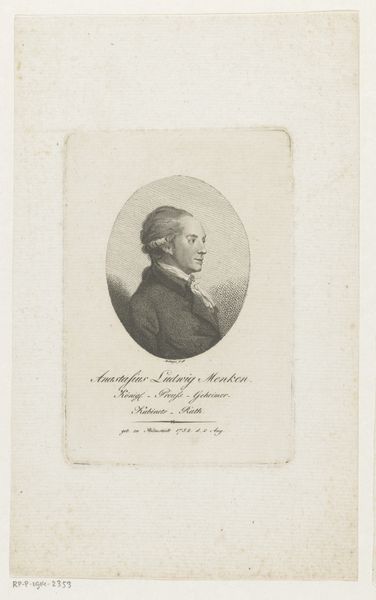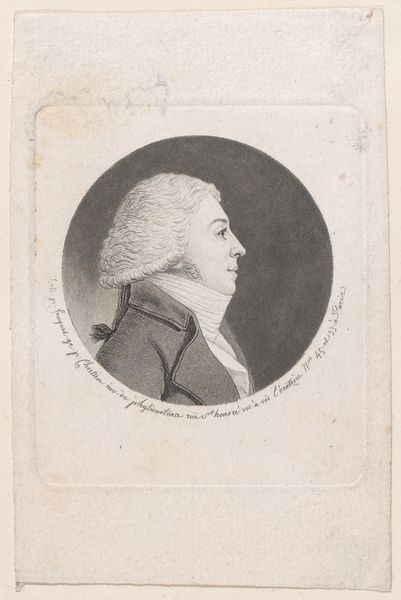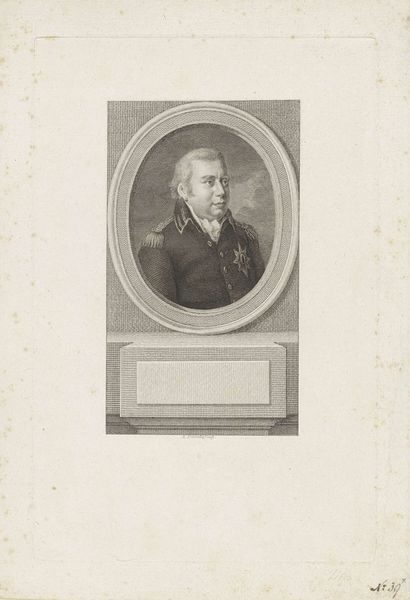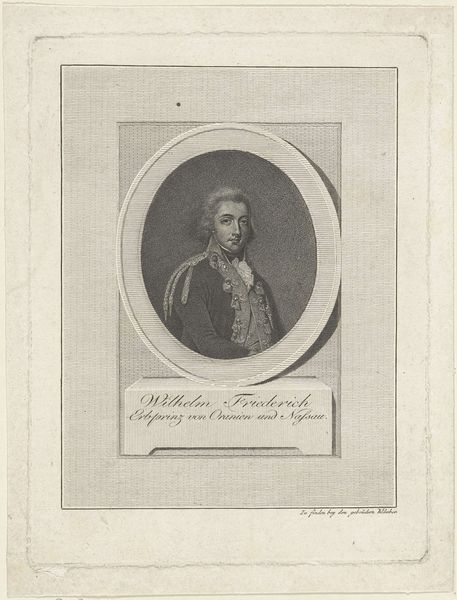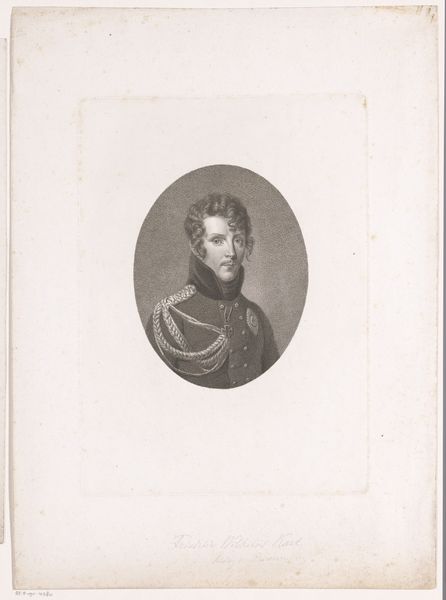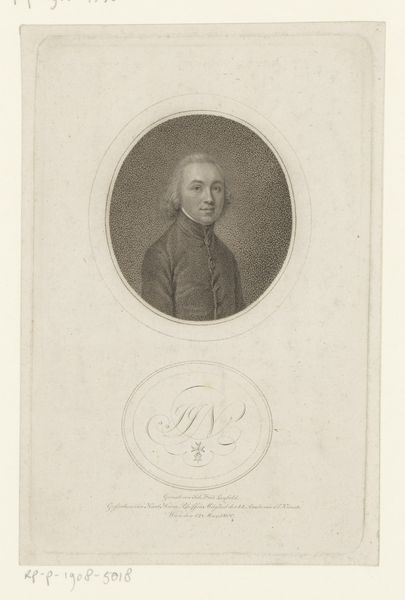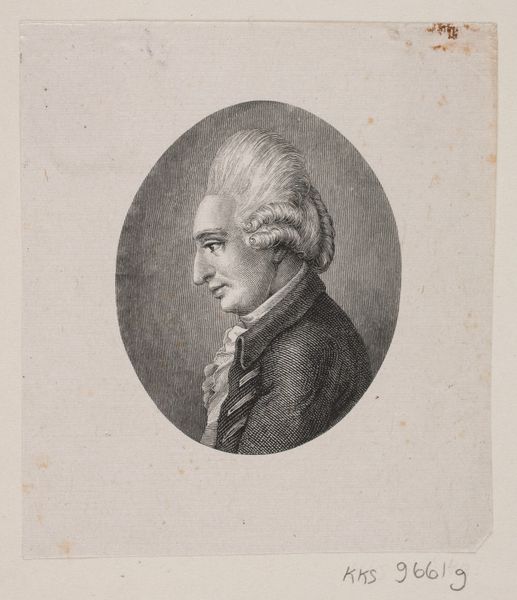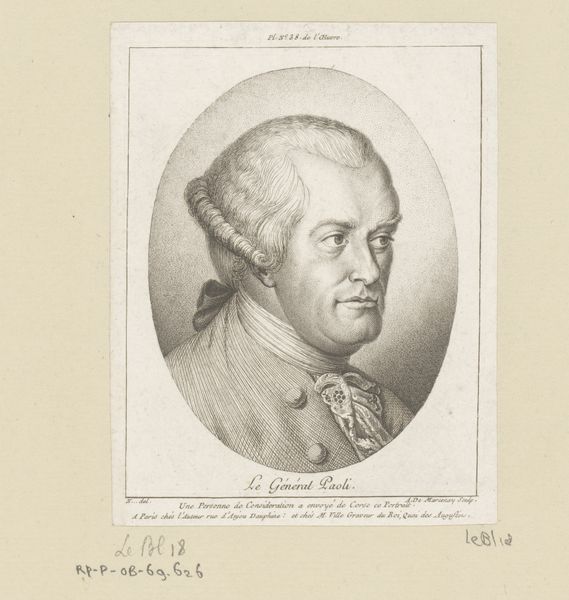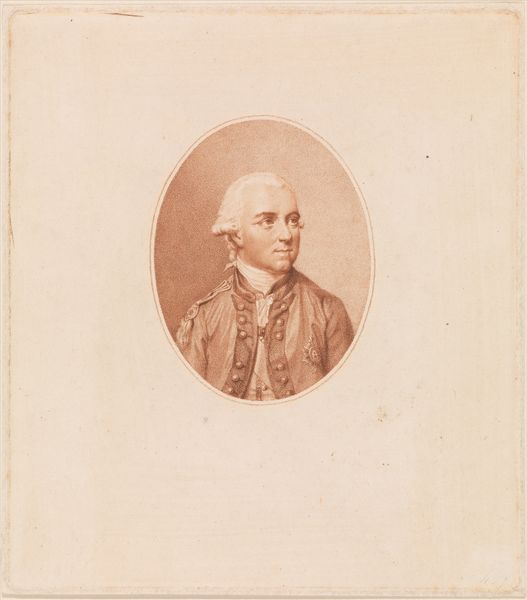
drawing, print, engraving
#
portrait
#
drawing
#
neoclacissism
# print
#
history-painting
#
engraving
#
profile
Dimensions: Plate: 3 1/16 × 2 5/8 in. (7.8 × 6.6 cm) Sheet: 4 13/16 × 3 1/4 in. (12.3 × 8.3 cm)
Copyright: Public Domain
Curator: Before us, we have an engraving from sometime between 1781 and 1811, Portrait of Citoyen Boncourt by Gilles Louis Chrétien, currently held at the Metropolitan Museum of Art. What strikes you first about it? Editor: It's incredibly crisp, almost photographic in its detail, despite being an engraving. And there’s a severity in the sitter’s expression that suggests someone quite self-possessed. The rendering is just stunning, with great tonal precision. Curator: Chrétien was a key figure in popularizing the physionotrace, a device used to create accurate profile portraits mechanically. This print would have been made as one in a series, highlighting notable figures of the time. It offers us insights into the aesthetics and social priorities during the late 18th century. Editor: The very mechanics of its creation interests me—the blend of mechanical aid and the engraver’s skill. The idea of mass-producing portraits for a wider audience speaks volumes about emerging bourgeois sensibilities. I also notice the delicacy in portraying the subject's coat and its details in a refined yet functional way. Curator: Precisely. This relates directly to shifts in social identity as these portraits were important to the rising middle class seeking a tangible representation of status and public identity, as it circulated within Parisian intellectual and social circles. Editor: I think it reflects a culture beginning to democratize portraiture, making it available to someone who may not have had access or the finances to commission a painting. It shifts the whole dynamic of artistic consumption. We can see it now as part of a historical narrative of accessibility. Curator: Yes, accessibility, coupled with how visual culture shapes individual and collective identities. And, by focusing on Boncourt as a "citizen," we see revolutionary ideals subtly promoted. It marks a critical transition in the representation of power. Editor: A shift from elaborate oil paintings of aristocratic patrons to a modest print celebrating civic identity. It leaves me thinking about how technological innovations changed not just artmaking but also the perception of social roles in the Revolutionary era. Curator: I agree. It's a remarkable visual artifact in understanding this seismic shift in power dynamics, and I'm struck by the way materials, techniques and modes of representation worked to construct that moment.
Comments
No comments
Be the first to comment and join the conversation on the ultimate creative platform.
